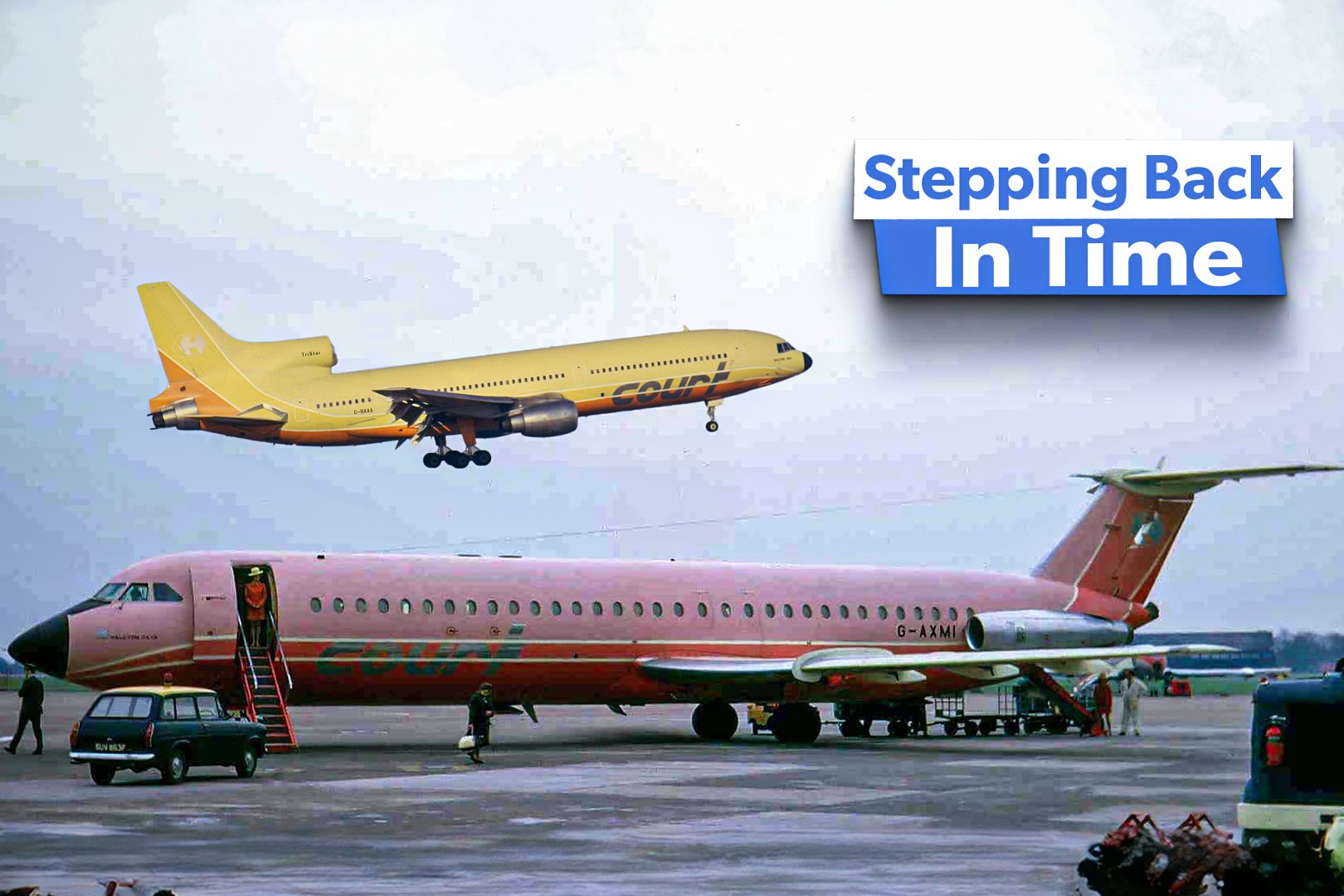Summary Court Line pioneered affordable holiday packages, but collapsed in 1974 due to financial mismanagement. The airline transitioned from a shipping company to the aviation sector through the purchase of Autair International Airways. Court Line's bankruptcy in 1974 left thousands stranded overseas, with its fleet grounded.
If you’ve ever made use of the 'cheap and cheerful' holiday packages to various travel destinations in the Mediterranean region and wondered which airline came up with this idea, the answer is Court Line. The airline ceased its operations half a century ago on this very day. An early trailblazer of the UK charter scene that quickly fell on hard times.

This carrier, headquartered in London, had origins that stretched as far as 1905. But close to 70 years later, the carrier ceased its operations, owing no less than $7 million to holidaymakers. In this article, we’ll look at how this pioneer of holiday packages started its operations and eventually collapsed.
From a shipping company to the airline business A British businessman named Philip Haldinstein founded Haldinstein & Co. in 1905. Around a decade later, when the First World War broke out, the company had a fleet of seven ships; it was operating as Court Line, Ltd then.
After Hladin’s brother joined the company, it was renamed Haldin and Philipps Ltd. The Second World War saw Haldin & Philipps Ltd lose 14 of the 23 ships it had when the war began. The origins of Argus Air Transport In 1957, Argus Air Transport was formed.
Six years later, it was renamed Autair International Airways. Autair, in addition to regular scheduled passenger operations, also had freighter flights and chartered flights. The types of aircraft it deployed for its operations included Douglas DC-3s and Vickers Vikings.
The Court Line Group purchased Autair Autair often chartered people on holidays looking for trips from various airports in the UK to Rotterdam. With the increased demand for holidays, the directors of Court Line Group decided to purchase Autair, reported yesterdaysairlines.com : “In 1965 Court Line, a shipping company, took 100% control of the company and it gradually grew, helped massively by the addition of new BAC One-Elevens from 1968, which were used almost exclusively on IT charters (whilst the props operated scheduled routes).
By 1969, 5 One-elevens helped carry over 500,000 passengers on charters whilst scheduled services only served 66,000 passengers.” Autair became Court Line Aviation on January 1st 1970. This brought forth a new livery, which was “an eye-catching selection of two shade pastel combinations”, which included the following: Light green, mid-green, forest green Pink, rose, and magenta Yellow, gold, and orange Violet, mauve, and purple From zenith to bankruptcy in the space of two years By 1973, Clarksons—Court Line's primary customer and in-house tour operator since April 1973—had carried 1.
1 million holidaymakers, equaling 1968's industry total. Clarkson also contracted more than 70% of Court Line's charter capacity. As holidays (in aircraft) were getting more affordable, competition in the market grew.
This led to Court Aviation trying to outdo its rivals by adopting a “volume model of business”. The airline also pioneered seat-back catering, leading to an increased seating density. The zenith of Court Line was marked by the arrival of its new widebody Tristars.
With it, Court Line also held the distinction of being the first European operator of the type. The Tristars were “modified for the Court with double-width doors, integral passenger airstairs, and baggage conveyors.” However, the aircraft had cost over $55 million.
The UK sliding into a deep recession coupled with the global oil crisis of 1973 meant that Court Line would be sliding down a path it couldn’t recover from. In 1974, the UK adopted a three-day working week to curb inflation in the nation. Amid the crisis, Clarksons reported millions of dollars of financial losses, which resulted in Court Line having to take over Clarkson.
This paved the way for the “reduction in package holiday bookings by 30%.” To ensure the company's functioning amid such financial strife, Clarksons started selling holiday packages well below cost. On August 15th, 1974, Court Line went bankrupt.
The following statistics hint at the scale of the bankruptcy: The entirety of its fleet, comprising Lockheed L-1011 TriStar and BAC One-Eleven, was grounded. 1,150 Court Line staff lost their jobs Close to 49,000 holidaymakers were stranded overseas with no means to return home to the UK. The final report of the Department of Trade and Industry assessed the reasons Court Line went bankrupt : “Court Line expanded rapidly in many directions, some of which were both logical and justifiable, others not.
The overall management was throughout inadequate, and it was in any event never supported by the necessary financial control. This meant that as Court Line expanded, it became progressively vulnerable to any substantial setback in any of its areas of activities.” Fleet of Court Line and the fate of its aircraft According to Planespotters.
net , the history of Court Line’s fleet reveals that it had a total of 23 aircraft. Aircraft number BAC One-Eleven 18 Handley Page Herald 3 Lockheed L-1011 TriStar 2 The earliest of its aircraft were delivered in January 1970. These were of the BAC One-Eleven family.
In the year prior to its closing, Court Line received 2 aircraft - both of which were of the Lockheed L-1011 TriStar family. Simple Flying has previously reported about the fate of some of the aircraft Court Line had when it became bankrupt: “The new Tristars swiftly found a new home in Hong Kong with Cathay Pacific Airways, with whom they flew until 1995 (G-BAAB) and 1996 (G-BAAA), respectively. Meanwhile, two other UK charter airlines, Dan-Air London and Monarch Airlines purchased four and two of the One-Eleven 500 fleet, respectively.
” Were you ever a part of Court Line's 'cheap and cheerful' holidays? Let us know in the comments below..



















